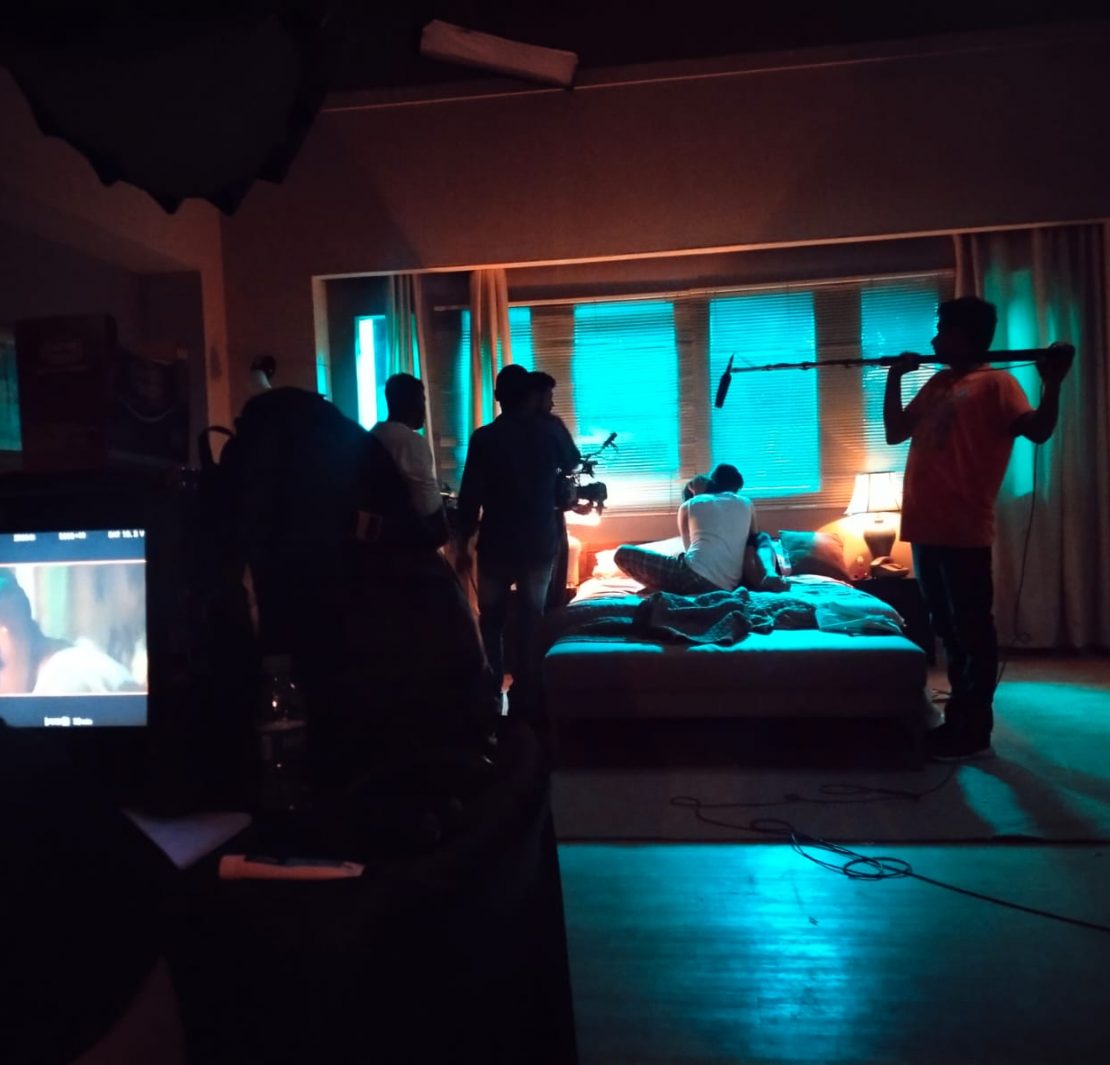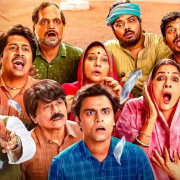When the #MeToo movement sent shockwaves throughout Hollywood, it gave rise to a profession born out of the need to reevaluate the industry’s culture.
It was in 2015 that Alicia Rodis, along with Tonia Sina, the progenitor of the phrase ‘intimacy choreographer’, co-founded the first of its kind not-for-profit Intimacy Directors International. And it took about 3 years after that for HBO to hire Rodis as a credited coordinator on the set of their show ‘The Deuce’. But even after more than five years since the show aired and the landscape of filmmaking changed, directors still seem pretty confused about what intimacy coordinators really do.
In India, the confusion was even more so.
“An intimacy coordinator’s job is to uphold the consent of the performers while making sure that the director’s vision is realised,” says Aastha Khanna, India’s first-ever certified intimacy coordinator.
Aastha came across the idea of an ‘intimacy coordinator’ during the lockdown, “This was around the time that a lot of OTT content had become really big and it did not have censorship with regard to intimacy specifically. There is, of course, a rating that is awarded but it’s not censored by the Indian Censorship Board. So, there was more and more intimate content being shot, but there weren’t protocols on what were the best and safest ways in which this content can be shot,” she added.
Aastha already had a background in film, with a BSc in film and television production from the University of York. Up until her ‘eureka moment’ in 2020 when she decided to venture into intimacy direction – she already knew what went on behind the camera, thanks to her experience as an Assistant Director. She got her certification from the Intimacy Professionals Association (IPA) in LA, one of the first agencies in the world to even offer such a course, founded by Amanda Blumenthal. She has since more or less pioneered the field in India, even mentoring a network of upcoming professionals in the country.
As with most intimacy coordinators, Aastha is usually called on to be part of a production early on during the scripting or the casting stage. But her involvement throughout filming also depends on the budget the production is working with. “The idea is to be a part of the storytelling process from the scripting stage so one can decide on the gaze of what we are trying to shoot. This also helps in making sure that casting calls go out to people that are aware of the on-screen intimacy that is required for their character,” she said. This involves her interacting not just with the actors, but also with the DOP and other visual creatives to understand the vision of the film.
The idea is to be a part of the storytelling process from the scripting stage so one can decide on the gaze of what we are trying to shoot
Once she realises the final product that needs to be delivered, her next step is to gauge where the actors’ comfort lies. “How comfortable are the performers? How much kissing or simulated sex do you want to see in the scene? Is there an emotional arc that we need to build in it?” are many of the questions that she keeps in mind when choreographing a scene. And no one jumps right into the scene on the day of filming – there are workshops and multiple rehearsals where the artists craft the scene to the T.
“In my workshops, I make sure that we address anything that may be uncomfortable to any of the performers. This does not involve actually doing any real sex acts or even kissing,” she continued. What we see on screen are only simulated sex scenes. Creating modesty garments or directing the camera in certain angles to make sure only the necessary body parts are visible, is a major part of an intimacy coordinator’s responsibilities, she explained.
There is, of course, a lot of cultural nuance that comes into play when it comes to Indian Cinema. Diversity in the West is usually three-fold – gender, race and sexuality. “In India, diversity has a lot more layers–there is language, culture, religion, caste and class. And one needs to have that knowledge as an intimacy coordinator to make sure that representation and gaze is accurate keeping in mind all these intricacies,” said Aastha on how she had to adapt her training in the Indian context.
In comparison, Bollywood is yet to explore intimacy on perhaps the same level as the West.“In India, intimacy is not yet a language of communication, but a language of expression,” echoes Ankita Podder, another intimacy coordinator in India, and Aastha’s mentee for about a year. Ankita, a theatre actor herself from Delhi, was one of Aastha’s first students for the Intimacy Lab, a course she created in collaboration with the IPA, which ended up being one of the first in India. In her experience, Indian films rely on the implication of an intimate scene a lot more. “It also depends on how a filmmaker is understanding the narrative and choosing to portray it,” she said.
And intimacy is more than just sex. “The purview of an intimacy coordinator is way beyond just kissing people,” said Akshay Murarka, South Asia’s first male intimacy coordinator, who got his certification earlier this year. “Suppose a scene involves a minor on set being given a bath by her father, these two actors are not actually related. Or a medical scene involving childbirth or transgender people. In scenes like that, you don’t realise that you need an intimacy coordinator on set,” he added.
In India, diversity has a lot more layers–there is language, culture, religion, caste and class. And one needs to have that knowledge as an intimacy coordinator to make sure that representation and gaze is accurate keeping in mind all these intricacies
Akshay’s gateway into Bollywood was acting, he has two diplomas from Barry John Acting School in Mumbai and the New York Film Academy. After dabbling in various styles of dance, he eventually found his way to contact improvisation, a form of dance that is an open-ended exploration of bodies moving through contact. “It deals with a lot of touch and boundaries, so I was very curious about how these topics would work in and around cinema. We have stuntmen choreographing stunt scenes, so I thought there must have to be something for this too,” he said.
A major challenge Akshay faces in his role is making sure actors learn to say no. “A lot of times, especially newer actors are unable to understand what their rights are,” said Akshay. When actors don’t feel comfortable opening up to directors at the risk of potentially losing their jobs, that’s when someone like Akshay or Ankita come in. And it’s slightly more complicated when it comes to men, said Ankita. “A lot of male actors will say they don’t have any boundaries, as culturally, men have been told to pretend that they’re fine. ‘I’ll be fine’, they say, ‘you take care of the female actor’,” she added. But for intimacy coordinators, it’s about ensuring that everybody’s comfort is at the same level. “Male actors also have their boundaries and they need an equal amount of care, privacy and empathy for their scenes to play out properly,” she emphasised.
“Sometimes people refer to us as the sex police,” Akshay recalled, admitting that their role does tow that line on set often. But it’s essential for them to educate as many people as possible, as unfortunately, a lot of intimate scenes are still shot from the perspective of the ‘male gaze’. As for Aastha, after having worked on nearly 30 projects, she finally has a voice on set on how something should or should not be shot, but ultimately, the director’s voice is also their own. “I can inform gaze if I’m invited to do so, if I am not, then my role is to make sure that whatever the gaze is, the performers are feeling comfortable,” she said. In her observations, a lot of directors feel like they have a great rapport with their performers, and they don’t need a third variable to bridge that gap for them. But an intimacy coordinator is more than a mediator. They are trained for intervention, mitigating risks and providing emotional aid. “They will also help you in making a scene sexier if there is a need,” added Aastha on how intimacy coordinators can also help the filmmakers creatively.
Upcoming directors are not as always welcoming to the concept of intimacy coordinators thinking they know the nuances best. “On my sets, I am the one who ensures that actors are comfortable doing intimate scenes, if there is any. So far, I have not felt any need for any intimacy coordinator,” said Amit Verma, director of the 3:15 AM short film, released earlier this year. The movie’s actor Shafi had received a nomination at Cannes Film Festival for best actor.
“I think the apprehensions around using intimacy coordinators and directors come from (filmmakers) not fully understanding what the job role is. It’s extremely human for people to respond in aversion to change,” Aastha said.
While Hollywood is still getting used to the idea of intimacy coordination over the last five years – it has been no more than a year since the profession made its way to Bollywood. It was only last year that an Indian feature-length film, Shakun Batra’s Gehraiyaan, credited a person as an intimacy director for the first time – and it was an Ukranian-born filmmaker, Dar Gai, who was called to take up the role. “I think the major challenges to navigate at this juncture for us have been budgets and being hired extensively for intimacy-related work. It’s extremely important for us to reach out to people and production houses and for them to fully understand the process and the work that we do so that they can then be better informed about when they need to hire intimacy coordinators,” Aastha said.
According to Akshay, there are currently around eight certified Indian professionals working as intimacy coordinators. The professionals emphasised that filming intimate scenes can be a traumatic experience if not done correctly. The culture of hush-hush mixed with the idea of masculinity that the industry is plagued with at present – Aastha, Akshay, Ankita and their colleagues said it’s a constant battle for acceptance and awareness. “I won’t say the shift is going to happen overnight, but once that happens, no artist may have to go through an unwanted experience moving forward,” Akshay added.





